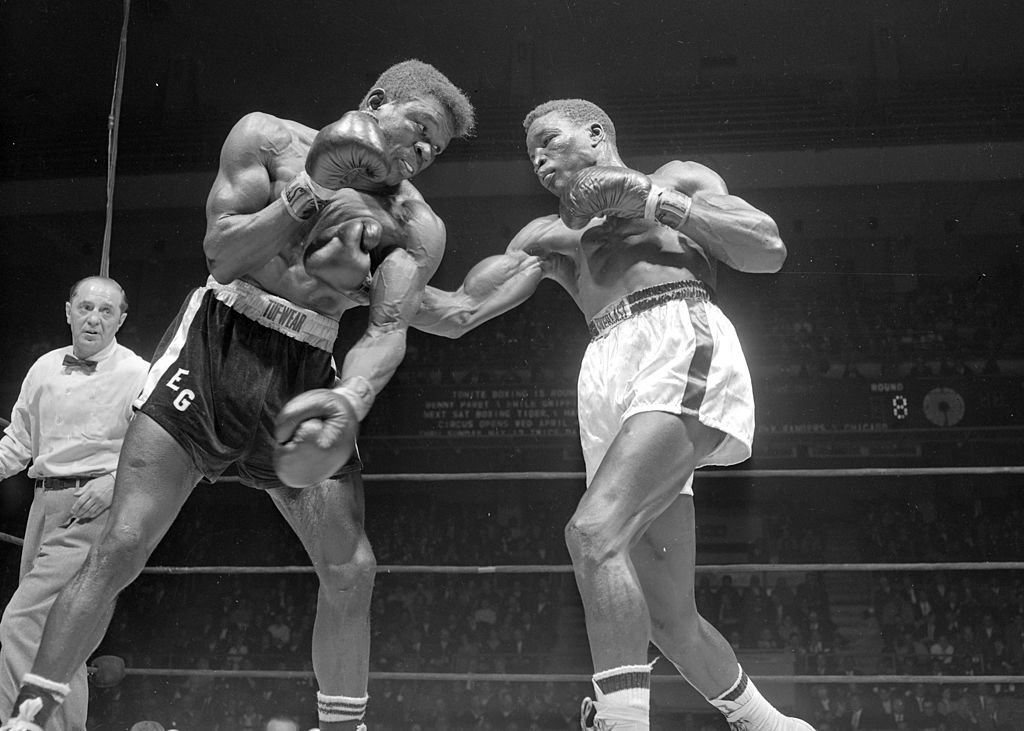Rein aus Neugier: gab es damals die Regel schon, dass der Ringrichter den Kampf stoppen durfte? Oder durfte das nur die Ecke? Heißt natürlich nicht, dass ich das Ringrichterverhalten damals gut finde, aber vielleicht war das zu der Zeit regelkonform oder geduldet, dass z.B. das Anzählen erst folgte, wenn man richtig am Boden ist. Früher war es ja auch noch erlaubt, den Gegner sofort zu attackieren, wenn er hochkommt oder solange, bis er runtergeht?
ganz genau kann ich Dir das nicht sagen, da ist evtl.
@Heinrich hier der Mann für solche Fälle.
Der Fight Eddie Machen vs. Ingemar Johansson fand am 14.9.1958 statt.
Mein Vergleichskampf Emile Griffith vs. Benny Kid Paret am 24.3.1962.
Achtung: toughes material, bitte nur schauen, wenn nicht zartbesaitet. das ist das Ende des Fights Griffith vs. Paret, welcher tödlich ausging. Der Ref griff dann schlussendlich doch noch ein,
stoppte den Fight, als Paret noch stand, aber viel zu spät.
Das Video und die Kommentare lassen den Schluss zu, dass der Ref. Goldstein hat eingreifen dürfen (was er ja auch tat). Die Sache wurde auch von einer Boxkommission untersucht:
In the 12th round of a scheduled 15, Emile Griffith hit Benny Paret with two brutal right hands, stunning the champion. At this point, however, Paret still had his hands up and could defend himself. That didn’t last long. Paret teetered backwards into the ropes and Griffith unloaded on him. Paret could no longer keep his hands up and his head was wide open. Griffith, obviously still angered by what had transpired that morning, pinned Paret against the ropes with his left hand while rocking him with his right, again and again with Paret’s head now outside the ring.
Referee Ruby Goldstein inexplicably allowed the onslaught to continue and never heard Paret’s corner’s attempt to stop it.
Griffith was angry and just punched and punched and punched, torquing his body every time to deliver the maximum amount of damage with each blow. After 29 consecutive shots, Goldstein finally jumped in and stopped it, giving Griffith the TKO win and the welterweight title. But there was more at play here than a title. Without Griffin holding him up, the unconscious body of Benny Paret slowly slid to the ground, all of this playing out on national television.
Emile Griffith vs. Benny Paret was one of the greatest trilogies in boxing history. However, the third and final fight ended in tragedy.

www.sportscasting.com
und
The referee
Ruby Goldstein, a respected veteran, came under criticism for not stopping the fight sooner. Goldstein explained in a 1964 interview, "I never blamed myself, but some of the people blamed me for not stopping it sooner. Sooner? If the fight were being fought right now, I wouldn't stop it sooner. Paret was a good, durable fighter, who'd look in trouble early in a round, but he'd come back to fire punches and win the round. He was the champion. You give the champion a chance to fight back."
[16] It has been argued that Goldstein hesitated because of Paret's reputation of feigning injury and Griffith's reputation as a poor finisher.
[6][12] Another theory is that Goldstein was afraid that Paret's supporters would riot.
[12] Goldstein would later reveal that he himself was scarred by the event, having nightmares, severe insomnia, and flashbacks to the fight.
[16] Though officially cleared of wrongdoing by the New York State Athletic Commission, Goldstein let his license to referee fights lapse.
[16] After later applying for a new license, he would referee only one more fight in his career in March 1964, before retiring permanently.
[17]
New York
Governor Nelson Rockefeller created a seven-man commission to investigate the incident and the sport.
[7] This fight, among others (such as nationally televised
Davey Moore vs.
Sugar Ramos in March 1963, which caused Moore's death) gradually led to the decline of boxing as a popular televised sport. Ultimately, ABC announced in December 1963 that it would cancel its weekly boxing program,
Fight of the Week, in September 1964.
[18] Professional boxing would not be televised on a regular basis again after that decline until the 1970s and was only rarely aired in
prime time until the following decade, and then not frequently on major networks.
[19]
Griffith would later receive hate mail from Paret supporters who were convinced he had intentionally killed Paret.
[7] He reportedly felt guilt over Paret's death and suffered nightmares about him for 40 years.
[7]
aus:
https://en.wikipedia.org/wiki/Benny_Paret_vs._Emile_Griffith_III
Mein Fazit ist, dass 1962 der Ref den Fight stoppen durfte, auch wenn der Fighter nicht unten war. Ob das 1958 auch galt, kann ich allerdings nicht mit Bestimmtheit sagen.
Dass Goldstein hier schlicht als Referee versagt hat, steht für mich ausser Zweifel.


